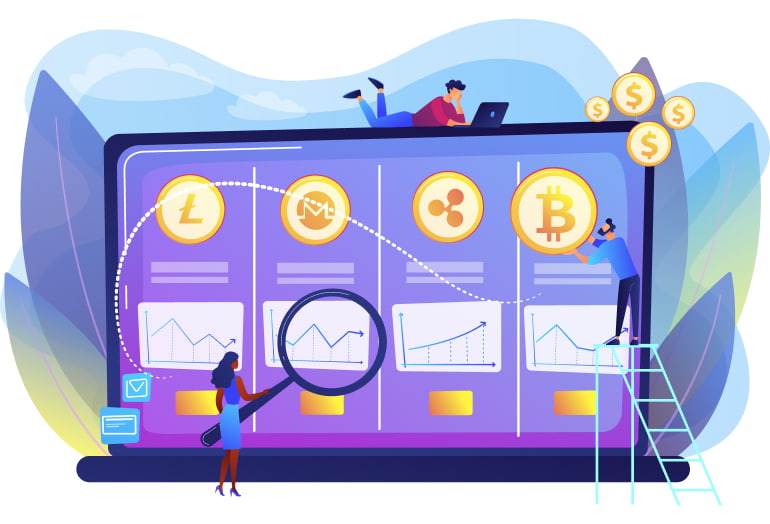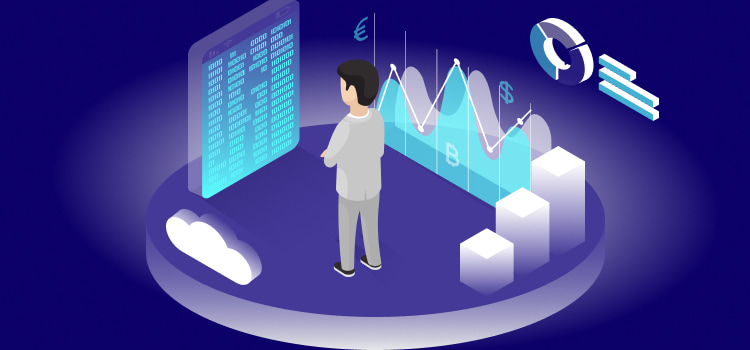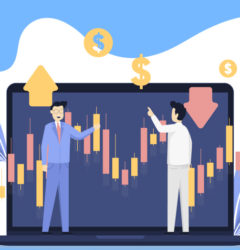25 May

Crypto trading is a trend that more and more traders are adopting. At the same time, as the price and capitalization of many cryptocurrencies are rising, more and more people are being encouraged to take the step to save on Bitcoin or other cryptocurrencies.
Backtesting is a general method of testing the effectiveness of a strategy or model after publication. Backtesting evaluates the viability of an online trading strategy by discovering how it will develop using historical data.
This is very common among intermediate to casual traders, to the point that no strategy is used in real-time until it has shown reliable and consistent results when backed up against history over a long period.
There are two ways to backtest cryptocurrencies:
- The classic way. It consists of going to a platform that allows you to rewind charts, go back in time and work in real-time with your strategy.
- Automatic way. Go to a platform that offers automatic backtesting, choose a strategy for a cryptocurrency bot, which usually consists of selecting technical indicators that determine when a strategy is bought and sold, and finally, choose a period to see the profitability of the automatic strategy.
For ten years, the automatic backtesting method has been used in all types of trading, both in forex and indices or other assets. However, many traders still prefer the classic way of testing their strategies, as their crypto trading style includes aspects that cannot be automated.
In the world of cryptocurrency trading, it seems that the automatic method has been the one that has prevailed almost since its inception for testing cryptocurrency strategies.
Benefits of backtesting bitcoins and other cryptocurrencies
It is best to do intensive backtesting of your crypto trading strategies, and there are countless benefits. Here is some of them:
- Assess the profitability of your strategy. You can find out if your strategy is profitable for the cryptocurrency you wanted to trade in minutes or even seconds, thanks to the automatic method of testing on the history of the cryptocurrency. It will save you a lot of time.
- Find your weak points easily. In many cases, when backtesting back to history, the platform on which you performed it offers a chart showing buy and sell points. Thus, in addition to knowing the profitability of your strategy by changing certain parameters, you can gradually improve your strategy and make it much more successful.
- Many assets, many strategies. In no other way can so many different crypto trading strategies and so many assets be tested, be they cryptocurrencies, forex, or indices. This gives you incredible flexibility in finding the asset that works best for the strategy you want to use.
- Almost instant adaptation to changes. The way assets perform in technical analysis usually changes from time to time. When you do this, the old strategy is not as effective and can lead to losses. Backtesting can quickly fix these changes by adapting to new technical behavior through intensive backtesting of the asset.
How do you do a backtest?
The principles of testing crypto trading strategies are the same regardless of the platform you use.

- As a first step, you need to provide your backtesting algorithm with carefully selected historical data. When backtesting, you need to define a specific period for your training set. Then you will need another dataset for an alternate period. Testing a strategy at different times is to test its robustness and reduce the role that randomness plays in the entire process.
- Next, you need to adjust some parameters depending on the complexity of your backtesting model. These can include start-up capital, equity at risk (%), portfolio size, commissions, average bid / ask spread, and most importantly, a benchmark. You must also adjust certain parameters of your crypto trading strategy. These include stop loss and trailing stop loss, the take profit level when you need to close a position, the type of preferred positions, and more.
- Then run a backtest on your test datasets. All the above information will be used to simulate transactions over a specific period.
- After completing backtesting, you must restart the process (at least a couple of times) on a different dataset. This will ensure that you have eliminated any possible bias and the role of the random factor. Most historical testing software also supports automatic strategy optimization functions. This feature is useful. The computer can determine with what input your strategy would work best. Ideally, it also gives you some ideas on how to fit your model.
What are backtesting methods?
The most popular backtesting methods are designed to measure value at risk. VaR indicates the maximum loss that you can expect for analysis on a given dataset and the likelihood of such a loss.
By knowing the risk value of their portfolios, investment managers or traders can prepare for the worst-case scenario.
You can research value at risk using a variety of methods. Some of these include Monte Carlo simulations, variance-covariance, and others.
All historical testing methods combine their findings. They tell you where your strategy is failing and where it works well, so you can make the right adjustments and optimize it to ensure the lowest level of risk relative to expected returns.
What are the indicators of success?

- Don’t make the mistake of choosing your strategy based solely on its strengths. While earnings are essential when taken out of context, they don’t provide any useful information.
- Analyze the profit in combination with the accepted risk to avoid falling into the trap. The best strategy yields satisfactory returns without significant risk. Alternatively, it has a high Sharpe ratio.
- Also, be sure to watch for volatility. If, after the backtest, you find that there are periods of high volatility in your portfolio, you should keep in mind that if this is reflected in the real world of trading, you run the risk of activating your stop loss or take profit. This is why it is essential to wait and adjust your orders according to the volatility of your portfolio.
- Another important thing that determines your success is the ratio of the ingredients. If there is a high correlation between assets, it means that your portfolio will not be strong enough to withstand shocks and industry risks. Otherwise, you will have low diversification and insufficient coverage. This makes you more vulnerable and prone to various problems.
Ten years ago, backtesting was exclusive to big sharks like hedge funds, investment banks, high-frequency trading firms, etc. Today, thanks to technology, backtesting is available even to retail traders and small investors. Backtesting is no longer a luxury today. It has become necessary and a real obligation to navigate the financial markets and engage in online trading successfully.
Crypto trading without proper backtesting is, at best, purely guesswork trading. Backtesting is a trader’s job. Without an initial analysis and accurate risk assessment, you will come out unprepared, vulnerable, and ready to be eaten not only by the market but also by other traders. Keep in mind that most of the traders you are currently competing with backtesting. If you want to maintain your position and gain a competitive edge, always do your homework.





